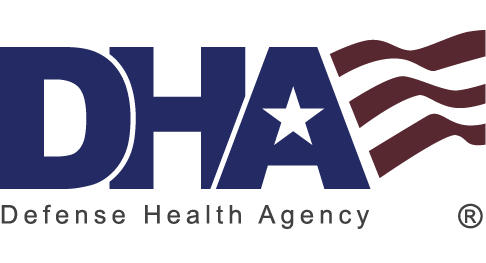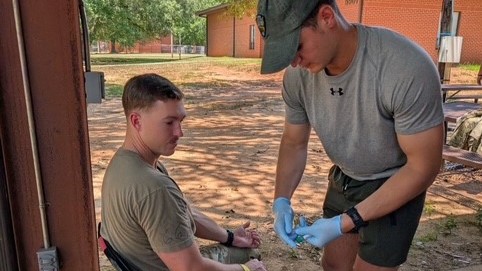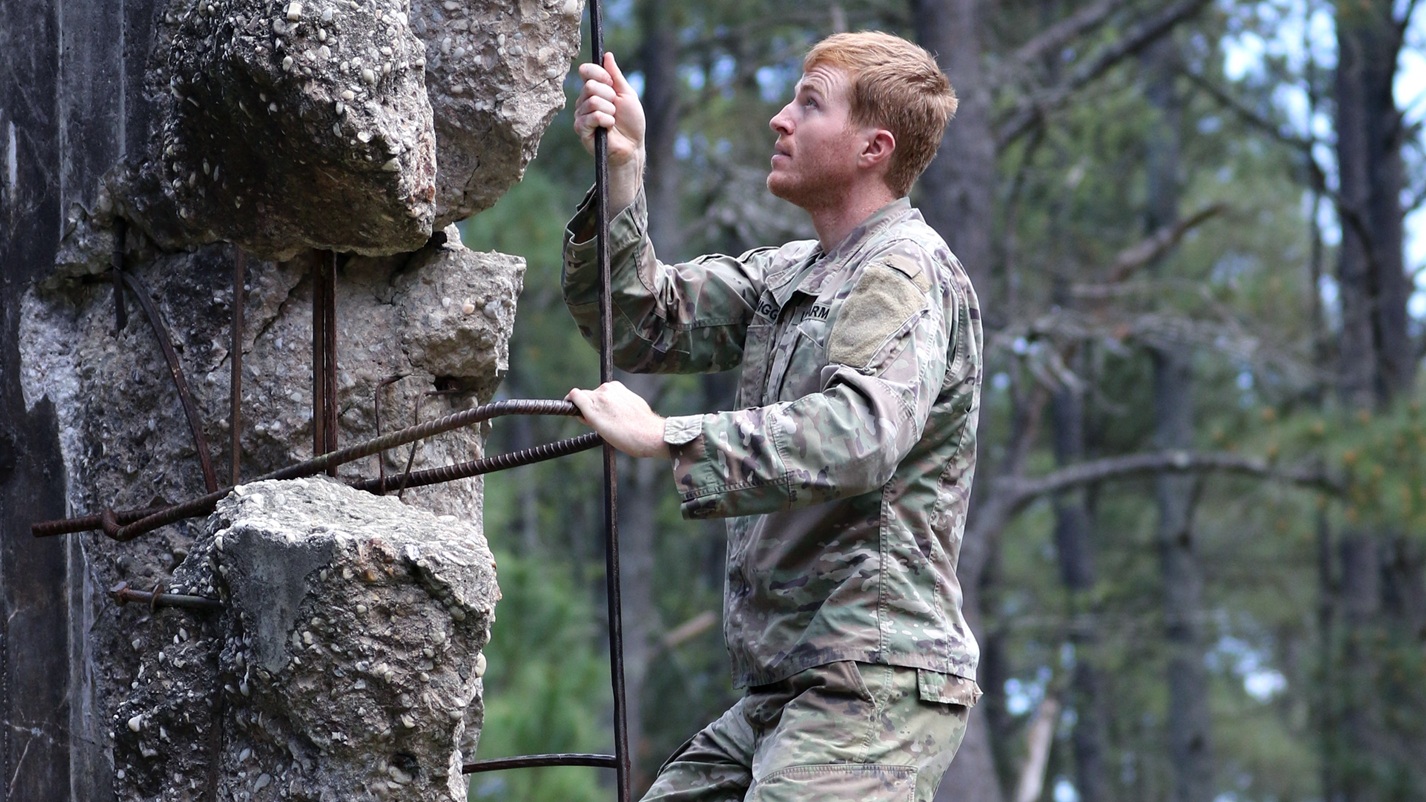Aug. 26, 2025 | By Paul Lagasse, Medical Research and Development Command
FORT DETRICK, Md. – Heat-related injuries are a persistent threat for warfighters, especially during ruck marches and timed runs. Physiologists have long sought to understand why some people are able to withstand the effects of heat for longer periods, while others of the same age and physical condition are prone to experiencing potentially dangerous symptoms. A team of researchers at the U.S. Army Research Institute of Environmental Medicine is seeking to solve that mystery by identifying specific physiological characteristics of people who are able to withstand extreme heat stress during training. By helping to identify risk factors and prevention strategies for heat-related illness, the research could lead to improved recovery and return-to-duty protocols that better protect the health of warfighters, thereby improving their readiness, endurance, and lethality.
Exertional heat stroke – a severe form of heat illness typically marked by high body temperature and altered mental status such as disorientation and loss of consciousness – affects nearly 500 service members per year. The journal Medical Surveillance Monthly Report recently found that the overall incidence rate of EHS among military personnel has increased in 2024 after three years of steady decline. Dr. Gabrielle Giersch, a research physiologist in USARIEM’s Thermal and Mountain Medicine Division who is leading the USARIEM study, says that the research into identifying risk factors and biomarkers associated with resilience to heat stress will help fill key gaps in our understanding of heat-related illness.
“Heat illnesses pose a serious threat not just to individuals, but also to units and deployability, and they impose a significant financial cost as well,” says Giersch. “We don’t have a lot of data on the factors that contribute to the onset of heat illness or optimal recovery time. This study is designed to help us develop better criteria for determining the return to duty requirements for heat illness casualties by identifying what puts people at risk and how those risk factors affect them.”
Earlier this summer, Giersch and her team traveled to Fort Rucker, Alabama, where they recruited 24 volunteer soldiers from 1st Battalion, 145th Aviation Regiment to serve as the study’s control group. Prior to participating in a five-mile run and an eight-mile ruck march as part of their regular physical training, the volunteers provided blood and urine samples and were fitted with instrumentation for monitoring their heart rate, skin temperature, and core temperature. They also completed a brief questionnaire on their health history. In follow-up visits post-exercise, the research team collected blood and urine samples from the volunteers at six-hour intervals for another 24 hours – the same frequency that care providers in emergency departments and hospitals take samples from actual heat illness casualties. The samples will be analyzed to identify the prevalence of biological molecules that can be correlated with a volunteer’s ability to better withstand the onset of EHS.
“The 24 individuals who participated in the initial data collection represented a pretty wide spectrum of race, sex, fitness status, and body mass index,” says Giersch. “We haven’t analyzed the blood samples yet, but the core temperature data showed that several people reached high temperatures without experiencing any symptoms of EHS and cooled off very quickly, which gives us a very good indication that we have a really good control group to identify what individuals who don't become heat illness casualties look like relative to those who do.”
Next, Giersch says, the team hopes to enlist Rangers and special operations forces as volunteers to participate in similar data collection events over the course of the summer. The team is specifically seeking data from the elite warfighter population because they tend to experience a higher than average rate of heat casualties thanks to the intensity of their training. The team aims to publish their findings next year. The outcomes of this study will also be used to inform future updates to the Army’s Medical Technical Bulletin 507, “Heat Stress Control and Heat Casualty Management,” which provides guidance for developing and implementing programs for preventing, diagnosing, and treating heat-related injuries – crucial for ensuring a swift return to duty and improving unit readiness rates.
In addition to informing policy decisions and pushing the boundaries of our understanding of heat-related injury, Giersch says the study has also been of intense personal interest to the soldiers who volunteer to participate in it.
“There is so much intrinsic value for the volunteers in this study,” says Giersch. “People were constantly coming up to me and asking what their core temperature was, when we'd have their blood data, and similar questions. They want to see the papers when they get published and learn how our study impacts policy. They really want to make life better for their future battle buddies, whether they know them or not. That makes it all worthwhile.”





